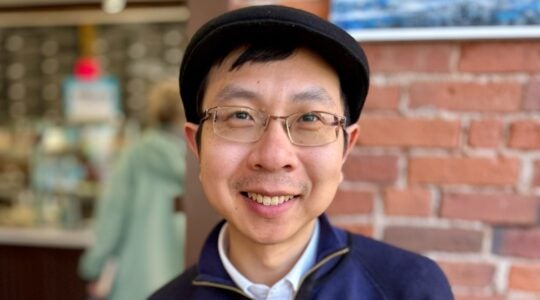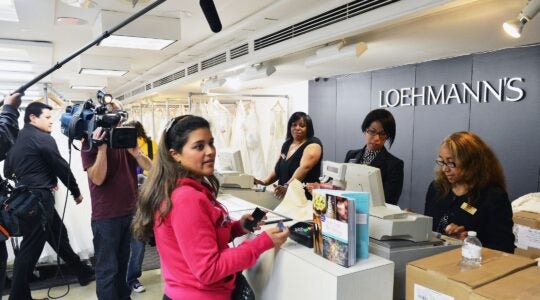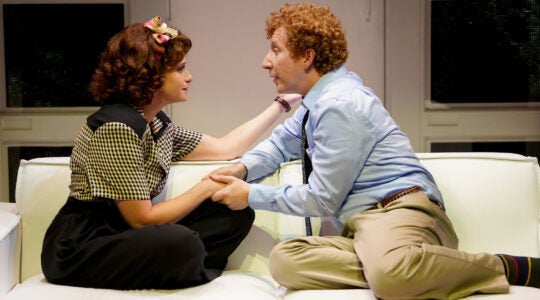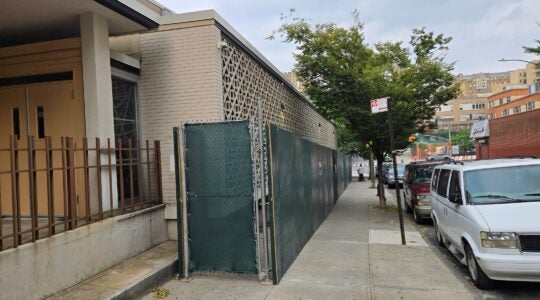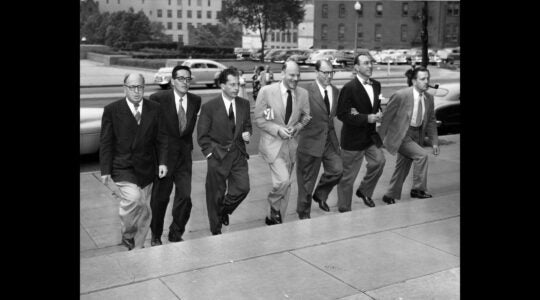It was the summer of 1986 and I was on the first NYC AIDS walk with two friends, one of whom, Joseph Dorman, was a filmmaker. Besides the oppressive heat and oppressive feelings of what the AIDS crisis had wrought for so many gay Americans, I remember our heated conversation, which ricocheted between questions about the meaning of the Left, the role of Jews in socialist movements, the Yiddish language’s ability to sustain Jewish ethnic identity, and the inconceivability of Jewish support for Reagan.
Years later, I saw Joe’s superb film, “Arguing the World” (1997), a collective portrait of four Jewish immigrant sons (Irving Howe, Irving Kristol, Daniel Bell and Nathan Glazer) who were part of the famed circle of New York intellectuals in the mid-20th century who had grappled with the very questions that had preoccupied us on our walk and which still preoccupy me today. The recent death of Morris Dickstein (1940-2021), Distinguished Professor Emeritus of English at the CUNY Graduate Center in New York City, a discerning critic of art and culture, and a talking head in that film, was an honorary younger member of the New York intellectuals. His death reminds us just how singular was the encounter of Jewish immigrants with American culture and politics in the postwar years — and how much has gone missing in writing about that encounter.
Most books on the New York intellectuals have focused on their immigrant roots, leftist politics and cultural marginality. Lionel Trilling, Daniel Bell, Sidney Hook, Irving Howe, Alfred Kazan, Irving Kristol, Norman Podhoretz and Nathan Glazer each had working-class backgrounds, public-school educations and anti-Stalinist bona fides. In their interwar heyday, they wrote for Partisan Review, a magazine devoted to a radical critique of politics and aesthetics. At the same time, they shared a general intoxication with the English language, and were renowned for their prose styles. “Writing Was Everything,” the title of Alfred Kazin’s 1995 autobiographical reflection, says it all. Each was a Cold War liberal— of varying stripes — in the postwar years. Some, notably Kristol and Podhoretz, fostered the rise of neoconservatism in the 1970s.
Alienation from America and discomfort with Jewish identity were cultural prerequisites for them as they engaged publicly with high culture and ideas. Although born into the Jewish community, “cosmopolitanism” and “universalism” were their watchwords. Almost to a man — Norman Podhoretz and Morris Dickstein are the outliers — they had no significant Jewish educations. Their Jewishness provided a context but not an agency to their identities.
At the very same time that these men insisted on universalist values as the core of their identities, other New York Jewish intellectuals were not ambivalent about their Jewish commitments. Carole Kessner’s important volume, “The “Other” New York Intellectuals” (1994), which included chapters on Hayim Greenberg, Henry Hurwitz, Marie Syrkin, Maurice Samuel, Ben Halperin, Trude Weiss-Rosmarin and Mordecai Kaplan, among others, offered a corrective to the standard narrative on the equivalency of Jewish immigrant intellectual and coolness to Jewish concerns. Kessner told me she did not include Lucy S. Dawidowicz (1915-1990), the subject of my new book, “From Left to Right: Lucy S. Dawidowicz, the New York Intellectuals and the Politics of Jewish History” (2020), because Dawidowicz was too young for her volume’s cohort.
Yet, Dawidowicz does belong. Like her cherished friend Marie Syrkin, a lifelong labor Zionist, poet and translator, Dawidowicz was unambivalent about her Jewish commitments. Like the famed New York intellectuals, Dawidowicz came of age as a child of East European Jewish immigrants during the politically intense 1930s. She, too, radicalized in college, became a Roosevelt Democrat before and during WWII, then a postwar liberal anti-Communist, and broke with the Democratic Party in the late 1960s. Like them, Dawidowicz studied English literature in college, a linguistic passport to her native country and a lifelong anchor.
Yet Dawidowicz differed from the male New York intellectuals in a crucial respect: her choice to root herself in the culture and history of East European Jewry, and to defend its distinctiveness. She encountered America from solid Jewish cultural and linguistic ground and with an intuitive sense of belonging to the Jewish people. Attending New York’s public schools, she was also educated at diaspora nationalist institutions like the Sholem Aleichem Folk Institute, Camp Boiberik and the YIVO Institute for Jewish Research, which represented a vast transnational Jewish diasporic Yiddish-speaking world. Rather than contribute to Partisan Review in the interwar years, she served as one of the editors of Shrift, the journal of the Sholem Aleichem Folk Institute’s Youth Organization, and regularly wrote in Yiddish. Her later scholarly and popular writings — many for Commentary magazine — had a distinctly Jewish audience in mind even as they spoke to a broader American audience.
Dawidowicz differed from the male New York intellectuals in a crucial respect: her choice to root herself in the culture and history of East European Jewry, and to defend its distinctiveness.
Most importantly, Dawidowicz made two fateful trips to Europe. In 1938 she went to study Yiddish culture and language at the Vilna YIVO — thus becoming, in her words, “the last witness” to the glory of East European Jewish civilization. In 1946-47 she returned to work with Displaced Persons in “the land of Amalek,” postwar occupied Germany. Part of her legacy—besides writing the seminal “The War Against the Jews, 1933-1945” (1975), a one-volume synthetic work on the Final Solution and the Holocaust — was the restitution of the remnants of the plundered Jewish libraries of Vilna to New York City after the war.
In a short essay on his mentor Lionel Trilling, Dickstein recalled that he bore a lifelong sting from Trilling’s lack of serious engagement with Dickstein’s Yale dissertation on Keats. Nonetheless, Dickstein went on to a distinguished career as an erudite critic of American art and culture, and as an insistent defender of the role of the informed critic in our increasingly noxious age of the intemperate social-media post. His voice will be sorely missed for all who believe that ideas matter and need to be written about vigorously.
But we should recall, too, Lucy S. Dawidowicz and those other New York intellectuals who felt that Jewish ideas mattered. Unlike Dickstein, who had a long association with Columbia’s English department, Dawidowicz left that university’s graduate program in 1936, having concluded that “Keats and Wordsworth no longer interested me.” She yearned to be associated with intellectuals for whom Jewish ideas, culture, and identity were central concerns.
Nearly three decades later, in the early 1960s, she returned to Columbia. To study Jewish history.
Nancy Sinkoff is professor of Jewish studies and history and Academic Director of The Allen and Joan Bildner Center for the Study of Jewish Life at Rutgers University. Her book, “From Left to Right: Lucy S. Dawidowicz, the New York Intellectuals and the Politics of Jewish History” (Wayne State University Press) won a 2020 National Jewish Book Award from the Jewish Book Council for best biography and the Fall 2020 Natan Notable Book award. The JBC awards will be presented at a virtual ceremony on Monday, April 12, 7–8:30 pm.
The New York Jewish Week brings you the stories behind the headlines, keeping you connected to Jewish life in New York. Help sustain the reporting you trust by donating today.
